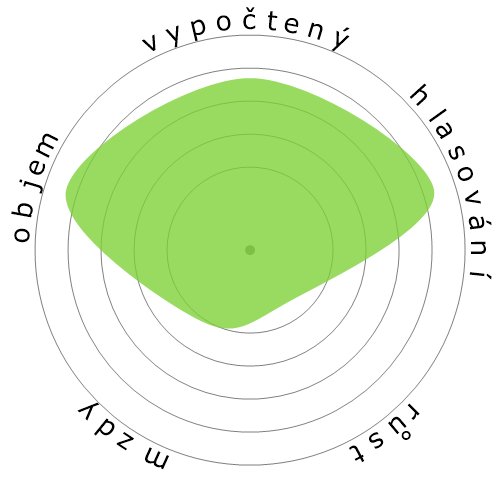Praktické a odborné zdravotní sestry s licencí




Lidé také zobrazili
Vypočítané riziko automatizace
Nízké riziko (21-40%): Práce na této úrovni mají omezené riziko automatizace, protože vyžadují kombinaci technických a lidsky orientovaných dovedností.
Další informace o tom, co tento skóre je a jak se vypočítává, jsou k dispozici zde.
Anketa uživatelů
Naši návštěvníci hlasovali, že je malá šance, že tato profese bude automatizována. Toto hodnocení je dále podpořeno vypočítanou úrovní rizika automatizace, která odhaduje 24% šanci na automatizaci.
Jaký si myslíte, že je riziko automatizace?
Jaká je pravděpodobnost, že Praktické a odborné zdravotní sestry s licencí bude během příštích 20 let nahrazen roboty nebo umělou inteligencí?
Růst
Počet pracovních míst pro 'Licensed Practical and Licensed Vocational Nurses' se očekává, že se zvýší o 2,6% do roku 2033
Celkové zaměstnanost a odhadované pracovní nabídky
Aktualizované projekce jsou splatné 09-2025.
Mzdy
V 2023 byla mediánová roční mzda pro 'Licensed Practical and Licensed Vocational Nurses' 59 730 $, což je 28 $ za hodinu.
'Licensed Practical and Licensed Vocational Nurses' byli placeni o 24,3% více než je národní mediánový plat, který činil 48 060 $
Mzdy v průběhu času
Objem
K 2023 bylo v Spojených státech zaměstnáno 630 250 lidí na pozici 'Licensed Practical and Licensed Vocational Nurses'.
Tohle představuje kolem 0,42% zaměstnané pracovní síly po celé zemi.
Jinými slovy, přibližně 1 z 240 lidí je zaměstnán jako 'Licensed Practical and Licensed Vocational Nurses'.
Popis práce
Péče o nemocné, zraněné nebo rekonvalescenty, nebo osoby se zdravotním postižením v nemocnicích, domovech pro seniory, klinikách, soukromých domech, domovech skupinové péče a podobných zařízeních. Práce může probíhat pod dohledem registrované sestry. Licence je vyžadována.
SOC Code: 29-2061.00


Komentáře
As an example, take the humanised skill of empathy. Empathy is the emotional skill to understand and share the feelings of another person. This shared emotional connection is something many, if not all, patients crave and desire. Empathy is something that AI cannot replicate well. In order for empathy to occur between two individuals, both individuals must be capable of emotions. Humans are capable of emotions, but AI robots are not. Emotions are biological, chemical, and mental reactions to certain stimuli. These reactions are uniquely inherent to organic living biological beings. An AI robot is not an organic living being, and thus cannot produce emotions. The best an AI can do is be programmed in a way to say certain things when a patient exhibits particular facial responses or verbal/tonal nuances. However, there is more to empathy than just being responsive. There exists a shared feeling that a human can only feel with another human, or another animal, especially when one of those humans is in a medically ill or injurious state.
Critical thinking serves as another example of a humanised skill that AI will find difficult to replicate. Critical thinking is the intellectual act of considering certain concepts, and constructing a charitable and objective take on said concepts through abstract reasoning or empirical evidence. To further this, the more unique and nuanced those concepts are, the more difficult it will be to critically think about said concepts. In the healthcare settings that LVNs find themselves in, there exists many unique concepts, or in this case, situations. I will illuminate one and that would be the case of patients with severe dementia. Patients with this mental condition may showcase behaviour that includes, but not limited to, loud screaming, random crying and potential desires for killing. What to do with these kind of patients is something LVNs face on a daily basis. Should the LVN just ignore the patient? Doing so may endanger the patient to him or herself, or worse, endanger other patients situated in the same room. Ignoring patients is also considered abuse in healthcare settings. On the other hand, ignoring the patient may allow the LVN to give care to other patients with much more debilitating conditions in the meantime, and thus allowing the LVN efficient time management. The LVN can also attend to that patient first, but only to administer medication that will calm him down, and make the LVN’s work less difficult. This may prove detrimental, if a family member of another patient asked the LVN to administer medicine to him first, because he missed a dose earlier in the day. With all this in mind, one can see how as an LVN there are many factors that they have to consider when making a reasonable decision, such as proper ethics, personal feelings, logical order of work, and so on. The LVN must be able to evaluate these factors and utilise his intellectual capacity for reason to support making the right decision. An AI’s intellectual capacity is much more rigid than a human’s mind. An AI robot cannot improvise at any given moment in the same fashion as a human. Unique situations, such as the aforementioned dementia case, requires a mind being able to asses many nuanced factors unique to the situation. Unfortunately, AI is just not capable yet of such critical thinking.
Zanechte odpověď na tuto profesi.